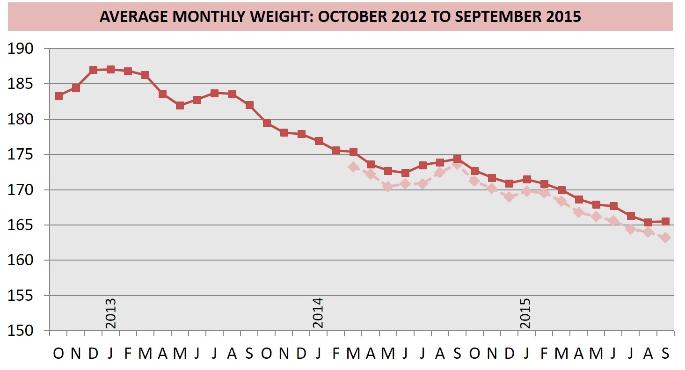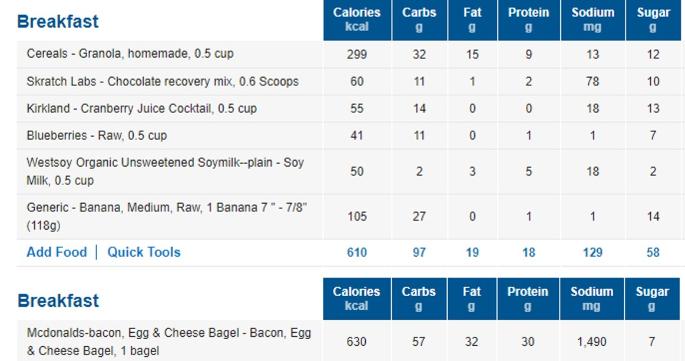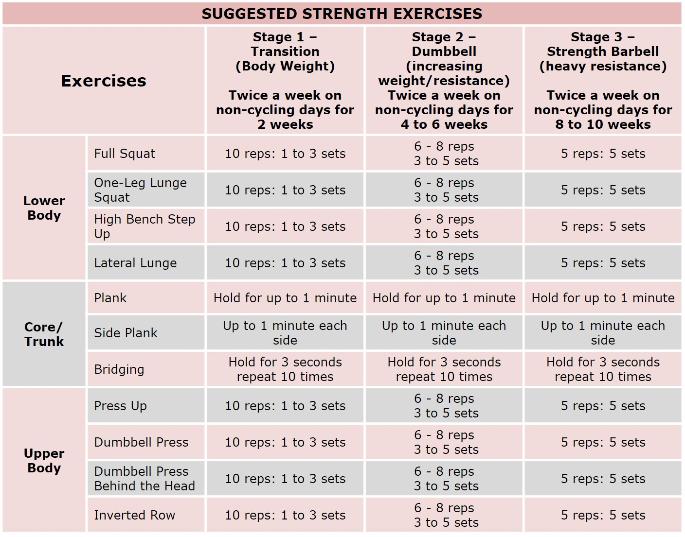Living an athlete’s lifestyle?
When does a person become an athlete? The Merriam-Webster dictionary defines an athlete as: “a person who is trained or skilled in exercises, sports, or games requiring physical strength, agility, or stamina.”
I have two problems with this definition. First, it presumes that a person is not an athlete until they have completed years of training and achieved a high level of proficiency in a particular sport. I argue that a person becomes an athlete at the moment he/she makes the commitment, both physical and emotional, to a sports goal. What kind of sports goal qualifies?
- To improve your health.
- You need a challenge in your life.
- Winning a bike race is on your bucket list.
- You want to be an inspiration to your spouse, children, and friends.
- You just want to satisfy a whim.
Whatever the reason, you won’t succeed without a goal. Let’s say that you want to reach the podium in a Masters age-group time trial bike race at the local, state, regional, or national level. That’s a helluva goal and it puts you into a very elite group of individuals. It is no exaggeration to say that you will become one in 10+ million of your fellow countrymen/women.
Second, the dictionary definition of an athlete makes no mention of the role of an athlete’s lifestyle. Achieving a sports goal takes more than just completing strength training or cardio exercise workouts. There are four key factors to an athlete’s lifestyle: sleep, nutrition, strength training, and cardio training. Let’s look at each one in a bit more detail.
SLEEP
![]() How much sleep do you need? The recommendation for an endurance athlete, to recover sufficiently from daily workouts, is 6-8 hours per night. A new generation of fitness and heart rate trackers are now available to help you.
How much sleep do you need? The recommendation for an endurance athlete, to recover sufficiently from daily workouts, is 6-8 hours per night. A new generation of fitness and heart rate trackers are now available to help you.
You can determine the quality of your sleep, as well as your daily heart rate stress levels. The two charts below were captured with a Garmin Vivosmart HR+ watch that I recently purchased.
It is easy to determine what is beneficial stress, like your workout, and what is causing debilitating stress, like work or family conflict. Pair this data with your heart rate variability (HRV) score and you now have an accurate measure of your readiness to complete your daily workouts.
NUTRITION
![]() Start thinking of food as fuel. That is what it is, plain and simple. Forget about “comfort” food, which is an excuse for overeating junk food with little or no nutritional value. What are the basics of healthy eating?
Start thinking of food as fuel. That is what it is, plain and simple. Forget about “comfort” food, which is an excuse for overeating junk food with little or no nutritional value. What are the basics of healthy eating?
- Eat three meals plus two snacks per day.
- Practice portion control.
- Do eat lean meats, healthy fats, and lots of vegetables. Aim for fresh, whole foods; use only foods with ingredients that you recognize; drink plenty of water.
- Don’t eat foods made from wheat flours, sweetened beverages, excessive alcohol, added sugars, refined vegetables or seed oils, or highly-processed foods with artificial ingredients.
- Don’t skip meals, especially breakfast. Skipping meals will put your body into starvation mode, which will cause your body to store fat.
Below is an example of my typical breakfast immediately after a workout. Compare it with a fast food breakfast sandwich that is loaded with fat and sodium. The total number of calories are similar, but the nutrient composition of the two breakfasts are miles apart.
How many calories do you need daily?
The recommendation for competitive endurance cyclists is a minimum of 1,800 calories. How does that compare with the number of calories you are actually consuming daily? You can find out by using an online food diary, like MyFitnessPal. There are a variety of free online diaries available that contain millions of food items, spanning homemade, commercial, and restaurant recipes and ingredients. That is how I was able to determine the calorie count and nutrition composition for my breakfast above, as well as my lunch, dinner, and snacks.
But, how many calories do you need to simply exist? There are two ways to determine your current basal metabolism rate (BMR), which is your minimum daily calorie count.
- A manual calculation (can be found online) that is based on an equation created back in 1919. You input your age, gender, height, and weight. Based on this formula, my BMR is 1,513 calories daily.
- A more scientific method requires a smart scale ($50-$100) that uses bioelectric impedance (a safe and very low electrical current) to measure your BMI, body fat, muscle, water, protein, visceral fat, bone mass, and BMR. My latest BMR measure was 1,781, a difference of almost 250 calories over the old equation, and close to the recommended minimum of 1,800 calories daily.
How to improve your Power-to-Weight Ratio
Since time trialing is all about being as aerodynamic as possible, how do you improve your power-to-weight ratio? The two main ways to improve are to lose weight and increase your sustainable power output. Rapid weight loss through dieting can actually be counterproductive as you could lose muscle mass, reducing your power-to-weight ratio.
The best way is to reduce your weight slowly, no more than one to two pounds per month, as I did in the chart below. At the same time, I was following a personalized training plan that incorporated high-intensity interval (HIIT) training workouts on Tuesdays and Thursdays to increase my sustainable power output.
 Not only did I lose 20 pounds from my gut (see before and after photos below), I increased my speed by almost two miles per hour as my power-to-weight ratio increased.
Not only did I lose 20 pounds from my gut (see before and after photos below), I increased my speed by almost two miles per hour as my power-to-weight ratio increased.
What is the right balance of carbohydrates, fats, and proteins?
The current thinking among sports nutritionists is a diet composed of 60% carbs, 20% fat, and 20% protein. Other experts advocate a more balanced diet with 40% carbs, 30% fat, and 30% protein. Both approaches are wrong.
“Percentages are meaningless, because it is the absolute amount of carbohydrate and protein that matters,” says Asker Jeukendrup, Ph.D., an exercise physiologist at the University of Birmingham in England and one of the world’s leading experts on the effects of different amounts of carbohydrate and protein intake on endurance performance. “How much you need depends on your goals and the amount of training you do.”
So what are the right amounts? “Typically, carbohydrate needs will vary from 5 to 10 grams per kilogram of body weight per day with training ranging from one hour per day to five hours or more,” says Jeukendrup. (Note that 1 kilogram is equal to 2.2 pounds).
Unlike protein and fat, carbs are not used structurally in the body—they are used strictly for fuel. Therefore the more active you are, the more carbohydrates you need, with the hardest training athletes requiring twice as much carbohydrates as the lightest athletes. Studies have shown that athletes who fail to increase their carbohydrate intake sufficiently to match increases in their training volume do not perform as well.
Protein needs also vary with training volume, although somewhat less. Traditional recommendations are 1 gram of protein per body weight daily for recreational endurance athletes increasing to 1.5 grams per kilogram per day for serious competitors. But in a recent study, Jeukendrup found that going all the way up to 3 grams per kilogram per day helped a group of elite cyclists to better handle the stress of an especially hard block of training. This is an extreme case, but it demonstrates that the carbohydrate and protein recommendations for athletes should be considered minimums. It’s OK and sometimes beneficial to get more, as long as doing so doesn’t cause you to consume too many total calories.
And fat? Dietary fat needs are less sensitive to fluctuations in training volume. According to Jeukendrup, you can trust that your fat needs will be met if you get the right amount of carbs and protein and simply let fat account for the remainder of your daily energy needs.
What Is your Ideal racing weight?
There are a number of online ideal race weight estimators available for free. A couple of caveats before you use one of these estimators. In theory, age shouldn’t be a determinant from middle age onward because height generally stays constant. However, males and females should expect to lose 1.5 to 2 inches in height respectively by age 70. Therefore, the only variables acting on body weight are muscle mass and body fat, which can be impacted upon by illness, diet, and exercise.
At the same time, be aware that as you age, lean muscle mass decreases and the accumulation of excess body fat becomes easier. Again, you can take actions to mitigate the loss of lean muscle mass and a gain in body fat by controlling your diet, exercise, stress, and sleep.
STRENGTH TRAINING
![]() There are numerous studies showing that strength training for cyclists produces significant benefits for the cardiorespiratory system, for weight control, for muscular endurance, and for psychological well being.
There are numerous studies showing that strength training for cyclists produces significant benefits for the cardiorespiratory system, for weight control, for muscular endurance, and for psychological well being.
At the same time, the fixed posture of cycling can have long term effects on the body’s ability to move in any other direction. Studies have shown that several hours of training on a bike tends to result in low bone mineral density (BMD) in the hips and lumbar regions. This is especially concerning as bone density tends to decline as we age.
The good news is that both effects can be counteracted by a sound off-the-bike resistance training program. Heavy resistance training for the key cycling muscles (quadriceps, hamstrings, buttocks, and calves) not only boosts muscle efficiency, but it can help prevent the loss of muscle power during periods of high volume training, or during periods of weight loss.
The following recommended strength training plan uses squats, leg presses, lunges, and single leg press to strengthen the cycling muscles. The core/trunk and upper body exercises add balance to the workout.
What are the guidelines for strength training?
- Light to moderate weights.
- 3-5 sets with 6-8 repetitions with 30-60 seconds rest between sets.
- Twice per week on non-cycling days.
- A gap of at least two days between sessions.
- Start each session with a 10-minute warmup, such as high-cadence pedalling on the bike, or an all body exercise and stretching routine. End the session with a gradual cool down, such as high-cadence pedaling on the bike.
- After sixteen weeks, the sessions can be reduced to one per week.
CARDIO TRAINING
![]() Time trialing is an excellent cardiovascular exercise that can be the cornerstone of any long-term fitness plan. There are four important principles that need to be followed:
Time trialing is an excellent cardiovascular exercise that can be the cornerstone of any long-term fitness plan. There are four important principles that need to be followed:
- Make training a habit. Get yourself into a regular daily training routine.
- Discipline yourself. Make sure you finish each session, and that you perform each session at the right intensity.
- Memorize your heart rate and power training levels and understand how each level feels.
- Riding successful time trials requires a strong mental attitude to keep you going when the going gets tough.
My coach added the following guidance to one of my recent training plans. “Often overlooked is the importance of developing an efficient pedaling technique. Use a low gear at higher cadence rates. Try generally to pedal at 95 rpm or above on the stationary trainer. On the road, this is more difficult as your cadence will likely drop when climbing (try to keep it over 80 rpm by changing gears) and increases going downhill. Remain seated (but keep the cadence high in low gears) when going uphill.”
He continues, “Higher pedal cadences require more blood and oxygen pumping to the working muscles, developing the cardiovascular system. Lower cadences place more emphasis on power output (strength to turn over bigger gears).”
THE 10 COMMANDMENTS OF TRAINING
- Train moderately.
- Train consistently.
- Get adequate rest.
- Train with a plan.
- Train with groups infrequently.
- Plan to peak.
- Improve weaknesses.
- Trust your training.
- Listen to your body.
- Commit to goals.
Have questions about your lifestyle? Not sure if you’re living an athlete’s lifestyle. Have questions or concerns about any aspect of your lifestyle and its impact on your competitive goals. Chances are pretty good that I’ve faced the same challenges during the last 20 years of training and racing. Ask me anything!
Categories
Archives





